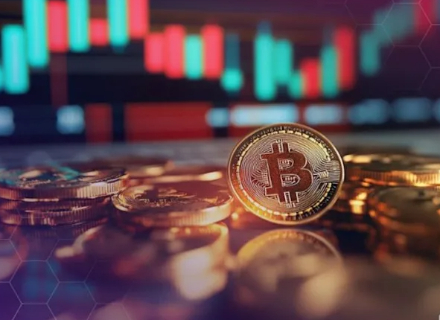Bitcoin Treasury Firms Now Valued at Less Than Their BTC Holdings Amid Crumbled Sentiment
As bitcoin treasury companies continue to struggle with tumbling share prices and rapidly slowing bitcoin accumulation in a tightening market, many are now trading below a 1x multiple to their net asset value (mNAV).
In other words, for these “pure play” treasury holders (i.e., excluding miners like MARA Holdings and broader crypto platforms such as Bullish), their market capitalization has dropped beneath the value of their bitcoin holdings.
Semler Scientific (SMLR) began its bitcoin treasury strategy in mid-2024 and accumulated over 5,000 BTC. Despite that, its share price is now trading roughly at the same level it was when the company began its bitcoin journey, around $24 per share, which now gives the company an mNAV of just 0.80x.
While Semler is currently in the process of being acquired by a relative newcomer, Strive (ASST), the buyer is also facing its own challenges.
A roughly 90% decline in Strive's stock price since completing a SPAC merger just over one month ago has left ASST's valuation at only about 50% of the value of the 5,885 bitcoin on its balance sheet.
This is also the case for another recently completed SPAC, KindlyMD (NAKA), the 19th-largest publicly traded bitcoin-holding company, which holds 5,765 BTC and trades at just 0.50x mNAV — a market cap of roughly $300 million and bitcoin holdings worth around $631 million. The company has $250 million in outstanding convertible debt, which could partly explain the significant discount.
While these are just a few notable examples, the valuations are largely the same across the board for these pure-play bitcoin treasury companies.
Other notable names are also trading below their NAV, according to BitcoinQuant data: Capital B (ACPB) at 0.75x (holding 2,818 BTC), The Smarter Web Company (SWC) at 0.72x (holding 2,660 BTC), H100 Group (GS9) at 0.88x (holding 1,046 BTC), and Metaplanet (3350) at 0.98x (holding 30,823 BTC).
These same companies were trading at significant premiums during the summer bull market. Since then, investor sentiment has shifted sharply from optimism to caution to the current full-out despair.
The discounts now raise an important question: do they represent real value, or is the market reflecting broader uncertainty about these firms’ balance sheets and execution?
What can treasury companies do to get back to a premium?
Sentiment needs to change, and that will likely require a stronger bitcoin market.
Bitcoin — while higher for the year — now sits at about the same level it was at on Jan. 20, the day of President Trump's inauguration. One aspect has been particularly frustrating for bulls: bitcoin has done little this year while stocks and precious metals continued to soar almost daily.
While it's challenging to control macroeconomic events, bitcoin treasury companies can consider several strategies to mitigate the discount.
One option is to buy back their stocks, which can be funded either by selling some bitcoin or issuing credit. The latter, however, depends heavily on a company’s ability to secure favorable terms and generate enough revenue to service new debt.
An example of this is Empery Digital, which has announced a $100 million credit facility to fund $150 million worth of stock repurchases. However, since this announcement, the stock has declined 10%, resulting in losses of 60% year-to-date. Additionally, Sequans Communications (SQNS), which holds 3,234 BTC, recently announced an American Depositary Share (ADS) buyback program representing 10% of its outstanding shares, authorizing the repurchase of up to 1.57 million ADSs. It is also down 27% since this announcement.
Another approach is to utilize their bitcoin by deploying a portion of their holdings into low-yield trading or liquidity strategies that generate modest single-digit returns. This is similar to what a bitcoin miner that is also buying BTC in the open market, MARA Holdings (MARA), has begun doing.
Strategy: the last one standing
Among the top 20 pure-play public bitcoin-holding companies, Michael Saylor's Strategy (MSTR) now stands alone in trading at a premium to its BTC stack.
At last check, the company's mNAV was roughly 1.39x. This, however, has been narrowing rapidly. At Strategy's record high stock price of $543 in November 2024, it was trading for nearly triple the value of its bitcoin.
Now, roughly one year later and with not just vastly more bitcoin on its balance sheet, but also about a 60% rally in the price of BTC, MSTR shares have tumbled to $285.
It's worth noting that a mNAV below 1.0 is not necessarily a death sentence. Even Strategy experienced a similar discount during the 2022 downturn. Those who bought in then were rewarded with exceptional returns — MSTR is higher by nearly 10 times since then, even with the recent decline in share prices.
Whether newer entrants now grappling with challenges similar to those MSTR faced in 2022 can also stage a recovery remains to be seen.
Disclaimer: The content of this article solely reflects the author's opinion and does not represent the platform in any capacity. This article is not intended to serve as a reference for making investment decisions.
You may also like
AiCoin Daily Report (October 27)
Surpassing Gemini and ChatGPT! In-depth Research and Evaluation of Alibaba Qwen: Free, Citable, and Capable of Generating Real-time Web Alpha Information Sources with One Click
Alibaba Qwen Deep Research has added one-click webpage and podcast generation features. In testing, Qwen and Gemini were tied for best accuracy; Qwen led in research depth and webpage output, while Gemini excelled in multimedia quality. Summary generated by Mars AI. The accuracy and completeness of this summary, generated by the Mars AI model, are still being iteratively improved.

Mars Morning News | Giggle Academy clarifies it has never issued any tokens, "100% Win Rate Mysterious Whale" increased long positions by 173.6 BTC again early this morning
The Base ecosystem prediction platform Limitless saw its token LMTS surge by 110%, with a market capitalization reaching $429 millions; MERL spot price increased by 40%, with a futures price spread of 48%; Machi suffered losses in contract trading; Giggle Academy clarified that it has not issued any tokens; Binance hired a Trump ally for lobbying; a mysterious whale increased BTC long positions; the probability of a Federal Reserve rate cut in October rose to 98.3%. Summary generated by Mars AI. The accuracy and completeness of this summary are still being iteratively improved.

Hong Kong Approves Asia's First Solana Spot ETF, Reshaping the Digital Finance Landscape
